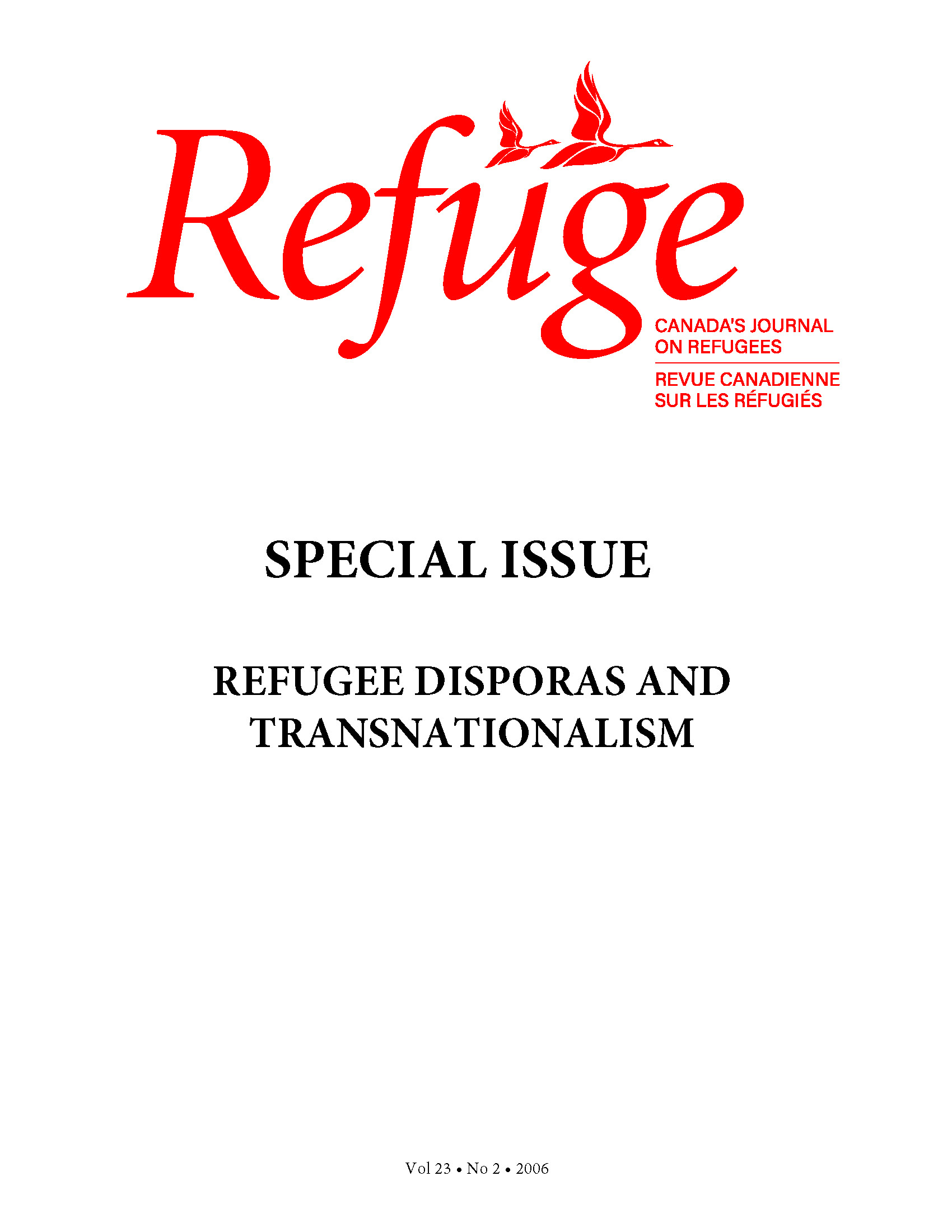Unaccompanied/Separated Minors and Refugee Protection in Canada: Filling Information Gaps
DOI:
https://doi.org/10.25071/1920-7336.21360Keywords:
Canada, unaccompanied minors, separated children, minor refugees, refugee protection, demographicsAbstract
This paper fills information gaps with regard to unaccompanied/ separated minors in Canada. By the means of reviewing Citizenship and Immigration Canada administrative databases, it investigates how many unaccompanied/separated refugee minors exist, who they are, and how they are received in Canada.We found that there were fewer truly unaccompanied minors than previously reported. In the asylum stream, only 0.63 per cent (or 1,087) of the total claimant population were found to be unaccompanied by adults in the past five years. In the resettlement stream only two truly unaccompanied minors were resettled during 2003 and 2004. Regarding their socio-demographic characteristics, we found that unaccompanied minors compose a highly heterogeneous group from many different countries. Regarding how they were received in Canada, very little evidence existed. Our study found that unaccompanied and separated asylum-seeking minors showed a higher acceptance rate and quicker processing times than the adult population, but details about the minors’ actual reception into Canada remains to be further explored. This study recommends that Citizenship and Immigration Canada review its administrative databases with a view toward improving the data about separated/unaccompanied children. Consistent and detailed definitions are required to develop a comprehensive policy framework for unaccompanied/ separated minor refugees in Canada.Metrics
Downloads
Published
How to Cite
Issue
Section
License
Copyright (c) 2006 Judith Wouk, Soojin Yu, Lisa Roach, Jessie Thomson, Anmarie Harris

This work is licensed under a Creative Commons Attribution-NonCommercial 4.0 International License.
Refuge authors retain the copyright over their work, and license it to the general public under the Creative Commons Attribution-Non Commercial License International (CC BY-NC 4.0). This license allows for non-commercial use, reproduction and adaption of the material in any medium or format, with proper attribution. For general information on Creative Commons licences, visit the Creative Commons site. For the CC BY-NC 4.0 license, review the human readable summary.







